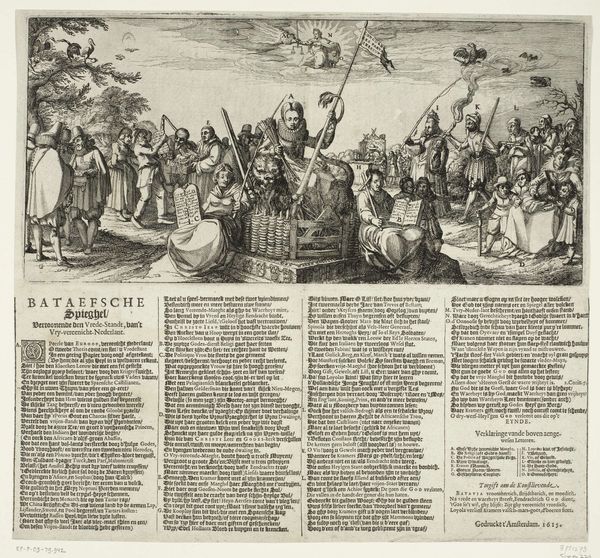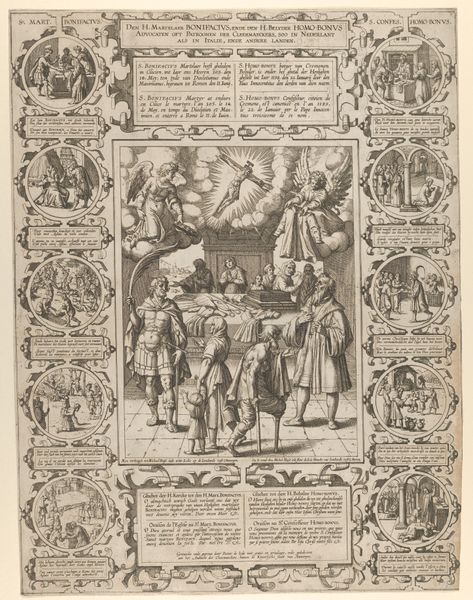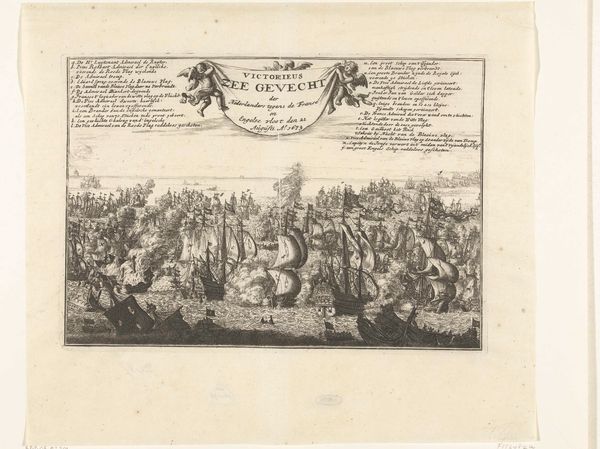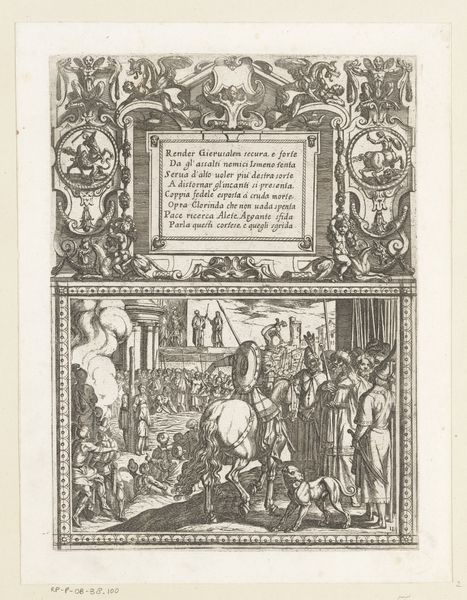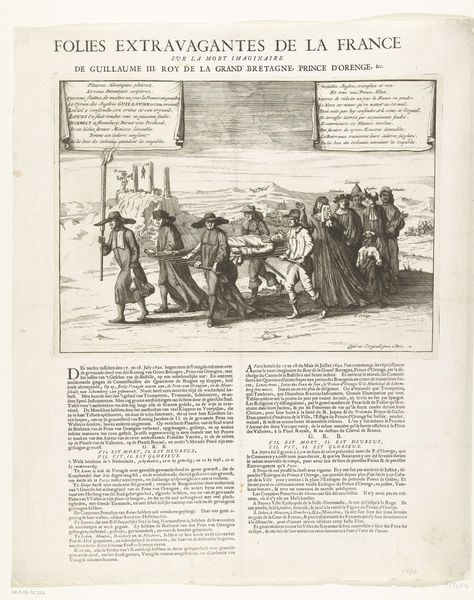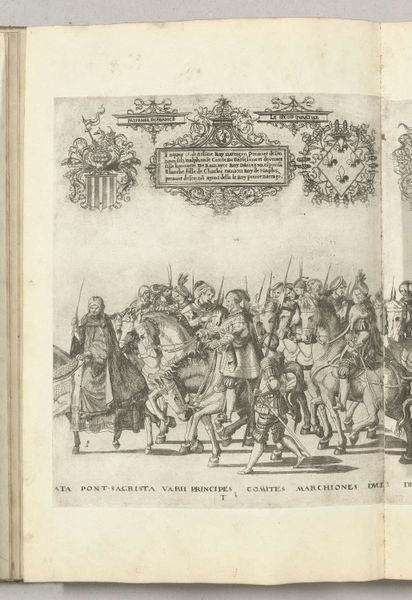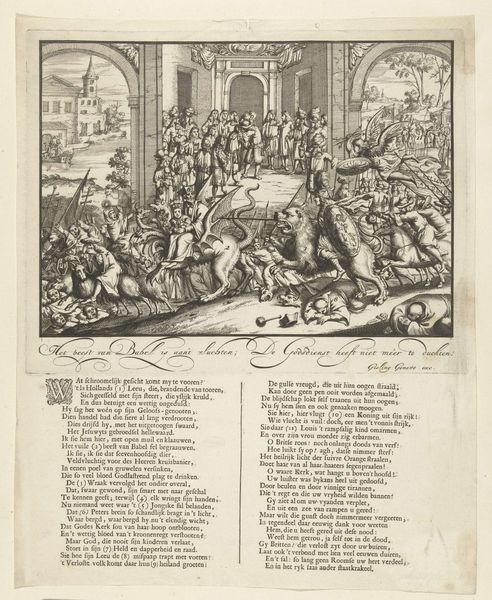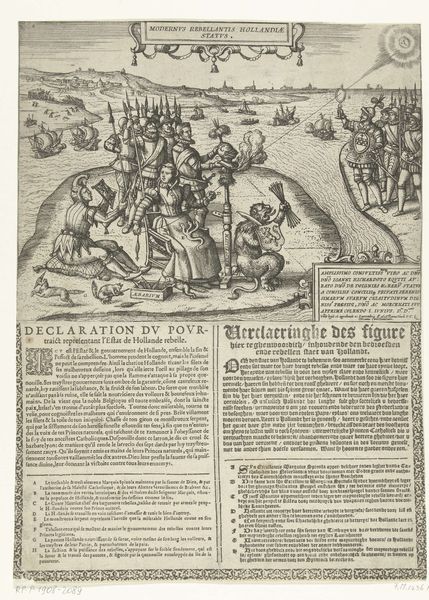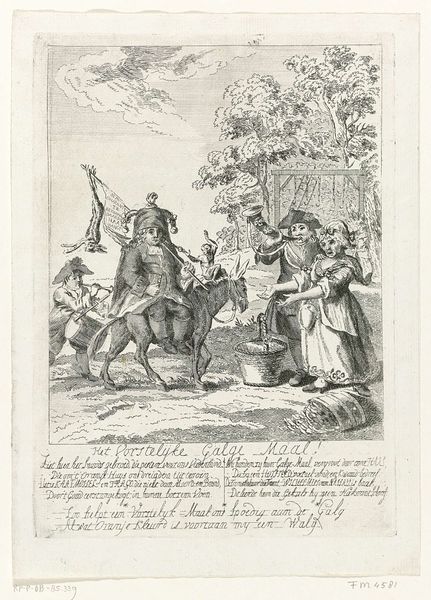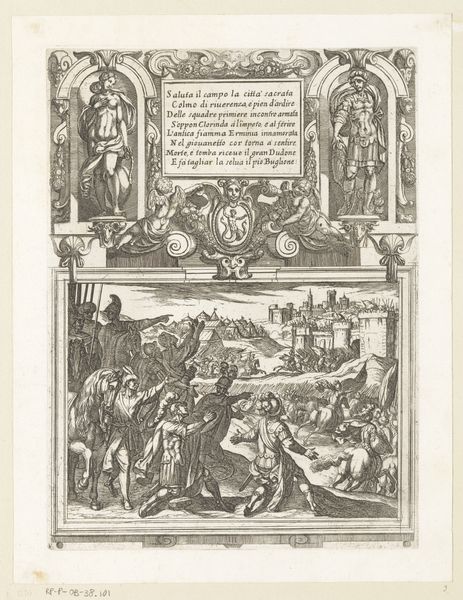
print, ink, pen, engraving
#
baroque
#
pen drawing
# print
#
old engraving style
#
ink
#
pen
#
history-painting
#
engraving
Dimensions: height 320 mm, width 201 mm
Copyright: Rijks Museum: Open Domain
Curator: This engraving from 1706 is titled "Eerbewijzen van de Spanjaarden aan Karel III," which translates to "Tributes of the Spaniards to Charles III." The artist remains anonymous. What strikes you about it? Editor: Well, right away, it's this sea of text! The image itself is captivating, but there's so much information surrounding it, like we’re getting context overload. Curator: Exactly. These aren't just captions; they're declarations, justifications. Note the carefully rendered symbols—a fortress, figures kneeling, divine endorsement overhead. Each reinforces the idea of legitimate power being transferred. Think about what these symbols might have meant at a time of constant war. Editor: Power, alright. The king and his entourage certainly convey that. All sharp lines and crisp angles against the sort of huddled supplication of figures beneath him. It makes me think of political cartoons. Were these kinds of works propaganda at the time, too? Curator: Undeniably. Prints like this circulated widely and shaped public opinion, acting as visual arguments for or against specific rulers. That carefully drawn, if a little stiff, Charles III aims to appear every inch the legitimate king, blessed from above and deserving of respect. Editor: There's almost a formula to it, like in religious iconography. The positioning of everyone, their scale... like an equation for royal dominance. Do you think the relative flatness has a meaning too? A kind of flattening of history itself, everything arranged to support one central, and idealized, narrative? Curator: It's a brilliant observation. The artistic conventions certainly emphasize the intended message above any notion of realism or depth. Every detail is consciously placed to construct this scene as one of power and legitimacy. Even the sheer busyness could serve the propaganda value – hard to contradict when there’s that much “proof”. Editor: A barrage of “truthiness,” if you like. So, by understanding these symbols and that underlying need to show legitimacy, we start to grasp how images can become potent tools. It's amazing how much gets packed into one of these. Curator: Absolutely. By analyzing how the print employs symbolism and visual rhetoric, we can reveal much about the socio-political forces at play during this historical moment. Editor: I love the way art makes me see the story, even if it is a bit embellished with fancy language!
Comments
No comments
Be the first to comment and join the conversation on the ultimate creative platform.

